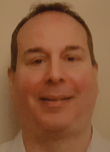7 Surefire Ways To Motivate A Life Science Consultant
By Allan Marinelli, Quality Validation 360 Inc.

Consultants play a significant role in the pharmaceutical, biopharmaceutical, vaccine, and medical device industries. They are experienced resources in crisis situations; when new facilities are being installed; under circumstances requiring technical expertise; and during regulatory emergencies, remediations, consent decrees, and other planned and unplanned situations. Problems often occur between clients and consultants, and both contribute to them. Motivational enablers/drivers increase the probability that a project will be completed successfully, provided the consultant acquires their own motivational abilities coupled with experience that meets the project requirements.
Companies in these industries are increasingly hiring consultants to meet the objectives of small to large capital projects. It is important that companies attempt to motivate their consultants to their maximum abilities.
Seven ways to motivate your consultant to work even harder are:
1. Give recognition where recognition is due.
When the majority rules, it is difficult to introduce a new idea/concept. This is especially true if you are one of the youngest consultants joining the group at the client site, even if the culture at the site allows different ideas to be introduced. That being said, there is always a possibility of conveying your idea despite the odds against it, if you listen to others’ input while providing your evidence to the contrary.
Successful consultants would like to see a reward system for excelling compared to average or non-performing consultants. This can be done by either providing an incentive for a higher hourly wage or creating project extensions beyond the original scope.
Clients that clearly communicate with their consultants and provide recognition incentives of the consultants’ great performance without lavishly glorifying them increase the probability of project success.
However, if an experienced consultant acts immaturely and contradicts for the sake of amusement and hearing his own voice, he should not be part of the team so he does not hinder the other consultants who are motivated to perform.
2. Provide coaching and leadership.
The coaching concept is usually associated with a full-timer’s relationship with their associated manager. But that is not always the case, since there is an increasing trend of hiring temporary consultants, who can be as a numerous as full-time workers within these industries. Consultants need coaching as well so the client can steer them in the right direction to meet their management user requirements (MURs).
The client must exhibit leadership qualities, or the consultant might see the client as not serious enough about the project, which will consequently demotivate the consultant to continue to perform.
3. Allow breaks from the normal routine.
The client needs to recognize the consultant needs a break from his normal routine by either taking a short-term vacation or a few days off to see his family. This will help the consultant continue to perform during normal conditions.
This is important because the consultant’s personal life may affect his work output if he is not allowed ample time. There was a case where a number of consultants working overseas wanted to take time off to see their families periodically. But the client insisted they could only see their families once every six months for a few days as opposed to every two months for a minimum of one week. Consequently, many consultants were upset and decided to spend hours on Skype while skipping meetings at work. Some consultants decided to quit, while others spontaneously took two weeks off for every two months of work whether the client approved or not. As a result, not much work was completed by each consultant and the project came to a screeching halt.
4. Create a positive working environment.
It is important for the client to inspire the consultant by noting successful projects and room for improvement. This will create a sense of optimism.
Attempt to create as positive of an environment for the consultant as possible. Clients often focus and disregard the consultants’ environment by lumping them like sardines in non-heated constructive trailers.
It is to the client’s advantage to provide the required tools and a positive environment. The required tools may entail the following:
- A chance to fill out a questionnaire or online survey in which the consultant can openly express positive areas in the environment and areas that need improvement without fearing repercussions
- Enabling an environment allowing opinions or different approaches with the intent to optimize and improve the current SOPs
- An opportunity to participate in a lunch-and-learn meeting, etc.
5. Set clear goals.
It is important to set appropriate goals in order to attain a successful client/consultant relationship. Five recommended steps are:
- Step 1: Establish a developmental project plan.
- Step 2: Prioritize goals using a scientific risk-based approach.
- Step 3: Identify methods necessary to achieve the goals.
- Step 4: Establish a measurement system.
- Step 5: Produce weekly status reports.
For additional details pertaining to the aforementioned steps, read “5 Steps To Set Effective Goals For A Life Science Consultant”.
Following the aforementioned five steps on a weekly basis, including following up with weekly reports, following up to align short- and long-term objectives with the MURs, using a measurement system/approach (e.g., metric, right first time), and letting the consultant know about his or her performance, will improve the chance that projects will go smoothly and the MURs will be achieved.
6. Provide incentives.
Providing incentives, such as working four days a week rather than five when the consultant reaches desired goals, motivates the consultant to continue on the path toward success. This will encourage the consultant to perform as efficiently and effectively as possible while bearing in mind that they can enjoy a soon-to-come long weekend.
By providing the likelihood of project extension or a great reference upon request as an enabling factor, the consultant is likely to be a consistent performer throughout the project’s life cycle. This will enable the consultant to maintain performance during the course of the project while anticipating or hoping to have the project extended if they have completed all that was needed within their control.
7. Solicit their input.
Listening to the consultants’ input (pros and cons) about how the project is going enables them to feel comfortable on the job and not fear resistance whenever opposition is encountered.
Conclusion
Many consultants will work hard in absence of the seven motivational indicators specified in this article. But, following these seven simple steps will aid in ensuring your life science consultant will maintain their motivation and, by consistently performing at the client site during the course of the project, inevitably increase the probability of continued engagement.
References:
- Marinelli, A. “Against the Grain”. Quality Progress. August 2014. http://asq.org/quality-progress/2014/08/quality-in-the-first-person/against-the-grain.html
- Marinelli, A. “Consultant Forum #3: Methods to Motivate Your Client”. IVT Network. October 31, 2017. http://www.ivtnetwork.com/jvt-journal
About The Author:
 Allan Marinelli acquired over 25 years of worldwide cGMP experience (in Belgium, France, South Korea, China, India, Canada, the U.S.) under the FDA, EMA, SFDA, KFDA, WHO, and other regulations. He is currently the president/CEO of Quality Validation 360 Incorporated, providing consultation services to the (bio)pharmaceutical, medical device, vaccine, and food/beverage industries. Marinelli has authored peer-reviewed papers (Institute of Validation Technology) and chapters on validation, risk analysis, environmental monitoring in PDA (Parenteral Drug Association) books, and chapters on cleaning validation in PDA books. In addition, Marinelli published peer-reviewed articles on Pharmaceutical Online, Bioprocess Online, and Outsourced Pharma in 2016 and 2017. He is an associate member of ASQ (American Society for Quality) and published an article in ASQ titled “Against the Grain, Standing your ground when senior majority rules” in Quality Digest (Aug. 2014). He may be contacted at amarinelli360@gmail.com.
Allan Marinelli acquired over 25 years of worldwide cGMP experience (in Belgium, France, South Korea, China, India, Canada, the U.S.) under the FDA, EMA, SFDA, KFDA, WHO, and other regulations. He is currently the president/CEO of Quality Validation 360 Incorporated, providing consultation services to the (bio)pharmaceutical, medical device, vaccine, and food/beverage industries. Marinelli has authored peer-reviewed papers (Institute of Validation Technology) and chapters on validation, risk analysis, environmental monitoring in PDA (Parenteral Drug Association) books, and chapters on cleaning validation in PDA books. In addition, Marinelli published peer-reviewed articles on Pharmaceutical Online, Bioprocess Online, and Outsourced Pharma in 2016 and 2017. He is an associate member of ASQ (American Society for Quality) and published an article in ASQ titled “Against the Grain, Standing your ground when senior majority rules” in Quality Digest (Aug. 2014). He may be contacted at amarinelli360@gmail.com.
